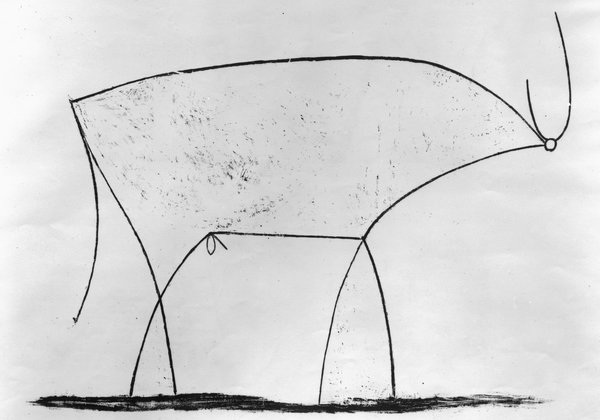Recently, the Wallstreet Journal reported on watches with simple designs. August 10, the NYT reviews how Apple strives for simplification as well. Below is based on article by Brian Chen on the Apple University in the NYT of August 10, 2014.
Apple and Picasso
Apple may well be the only tech company on the planet that would dare compare itself to Picasso. In a class at the company’s internal training program, the so-called Apple University, the instructor likened the 11 lithographs that make up Picasso’s “The Bull” to the way Apple builds its smartphones and other devices. The idea: Apple designers strive for simplicity just as Picasso eliminated details to create a great work of art.
Steven P. Jobs established Apple University as a way to inculcate employees into Apple’s business culture and educate them about its history, particularly as the company grew and the tech business changed. Courses are not required, only recommended, but getting new employees to enroll is rarely a problem.
Taking a Cue From Picasso
Apple has religiously embodied the notion that function and beauty come from elegant simplicity, and teachers in its internal training program sometimes point to a collection of Picasso lithographs that artfully illustrate the drive to boil down an idea to its most essential components:
That drive can be seen in many of Apple’s endeavors today, including its product marketing and the design and ergonomics of its mouse:



 Randy Nelson, who came from the animation studio Pixar, co-founded by Mr. Jobs, is one of the teachers of “Communicating at Apple.” This course, open to various levels of employees, focuses on clear communication, not just for making products intuitive, but also for sharing ideas with peers and marketing products.
Randy Nelson, who came from the animation studio Pixar, co-founded by Mr. Jobs, is one of the teachers of “Communicating at Apple.” This course, open to various levels of employees, focuses on clear communication, not just for making products intuitive, but also for sharing ideas with peers and marketing products.
In a version of the class taught last year, Mr. Nelson showed a slide of “The Bull,” a series of 11 lithographs of a bull that Picasso created over about a month, starting in late 1945. In the early stages, the bull has a snout, shoulder shanks and hooves, but over the iterations, those details vanish. The last image is a curvy stick figure that is still unmistakably a bull.
“You go through more iterations until you can simply deliver your message in a very concise way, and that is true to the Apple brand and everything we do,” recalled one person who took the course.
In “What Makes Apple, Apple,” another course that Mr. Nelson occasionally teaches, he showed a slide of the remote control for the Google TV, said an employee who took the class last year. The remote has 78 buttons. Then, the employee said, Mr. Nelson displayed a photo of the Apple TV remote, a thin piece of metal with just three buttons.
How did Apple’s designers decide on three buttons? They started out with an idea, Mr. Nelson explained, and debated until they had just what was needed — a button to play and pause a video, a button to select something to watch, and another to go to the main menu.
The Google TV remote serves as a counterexample; it had so many buttons, Mr. Nelson said, because the individual engineers and designers who worked on the project all got what they wanted. But, Apple’s designers concluded, only three were needed.
“The Best Things,” another course, takes its name from a quotation by Mr. Jobs. Its purpose is to remind employees to surround themselves with the best things, like talented peers and high-quality materials, so that they can do their best work.
One of the teachers for this course, Joshua Cohen, a Stanford professor, brought up Central Park in New York. The space for the park was originally a rocky swamp. But, Mr. Cohen said, its designers wanted to transform it into an area that gave urban residents the experience of nature.
The comparison was to one of Mr. Jobs’s goals: to make complex computer technologies feel understandable and natural.





